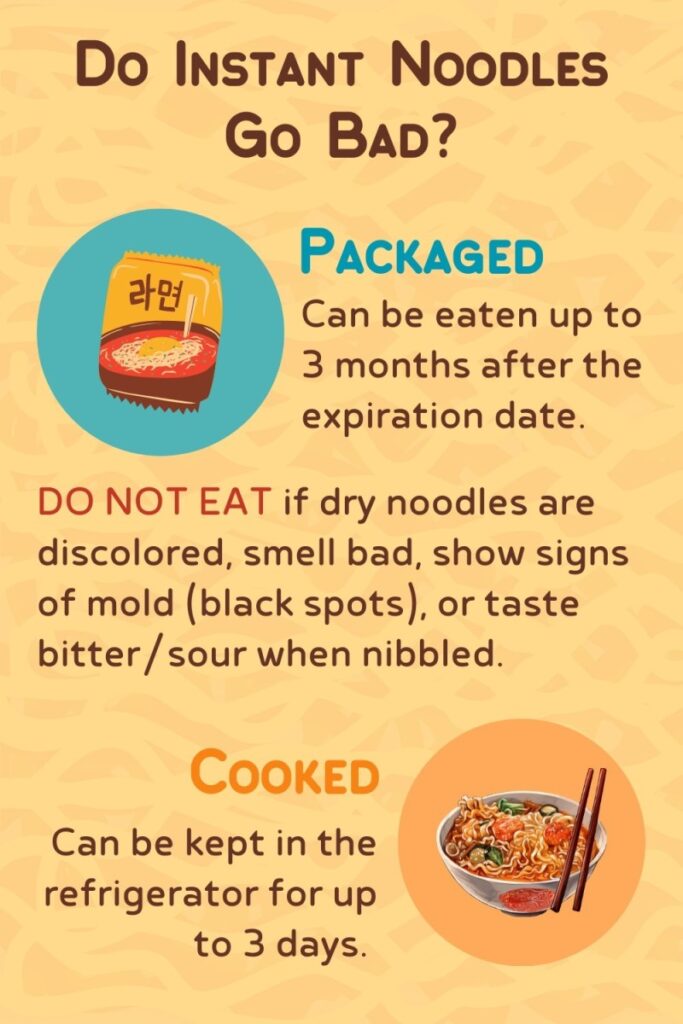
Ramen noodles are a beloved staple in many pantries around the world. Their affordability, convenience, and satisfying taste make them a go-to meal for students, busy professionals, and anyone looking for a quick and easy dinner solution. But have you ever wondered how long those packets of ramen actually last?
This article will delve into the fascinating world of ramen noodle shelf life, exploring the factors that influence their longevity and providing practical tips on how to store them properly to maximize their freshness. We’ll also discuss the telltale signs of spoiled ramen noodles, ensuring you can confidently enjoy this culinary classic for years to come.
Ramen Noodles Shelf Life
The good news is that unopened packages of ramen noodles boast an impressive shelf life. Due to their processed nature and low moisture content, they are considered non-perishable, meaning they don’t require refrigeration and can last for a surprisingly long time if stored correctly. Generally, you can expect unopened ramen noodles to remain safe and edible for at least 2 years past their “best by” date.
However, it’s important to note that this is just an estimate. The actual shelf life of your ramen noodles can vary depending on several factors, including the storage conditions, manufacturing date, and specific brand. Always check the packaging for any manufacturer-recommended shelf life guidelines.
Storage Conditions for Ramen Noodles

Proper storage is crucial for extending the shelf life of your ramen noodles. Here are some essential tips to keep them fresh and flavorful:
- Cool and Dry: Store your ramen noodles in a cool, dry place away from direct sunlight, heat sources, and excessive humidity. A pantry or cupboard is an ideal location.
- Airtight Container: Transfer unopened packages of ramen noodles into airtight containers to protect them from moisture, insects, and odors. This will help maintain their freshness and prevent spoilage.
- Avoid Freezing: While freezing can extend the shelf life of some foods, it’s not recommended for ramen noodles. Freezing can cause the noodles to become mushy and affect their texture when cooked.
Factors Affecting Shelf Life
Several factors can influence the shelf life of your ramen noodles:
- Manufacturing Date: Ramen noodles have a best-by date printed on the packaging, indicating the manufacturer’s recommended timeframe for optimal freshness. Try to consume them before this date for the best quality.
- Storage Conditions: As mentioned previously, proper storage is essential. Exposure to heat, moisture, and sunlight can accelerate spoilage.
- Brand and Type: Different brands and types of ramen noodles may have varying shelf lives due to differences in ingredients, processing methods, and packaging materials.
Signs of Spoiled Ramen Noodles

While ramen noodles are known for their long shelf life, they can eventually spoil if not stored properly. Here are some signs to watch out for:
- Discoloration: If the noodles have changed color significantly from their original shade, it could indicate spoilage.
- Off Odor: A rancid or unpleasant odor emanating from the package is a clear sign that the ramen noodles have gone bad.
- Mold Growth: Any visible mold growth on the noodles or packaging indicates that they are no longer safe to consume.
Conclusion
Understanding how long ramen noodles last and the factors that influence their shelf life can help you make informed decisions about your pantry staples. By following proper storage guidelines and paying attention to signs of spoilage, you can enjoy this convenient and flavorful food for years to come. Remember, while are ramen noodles non perishable and have a long shelf life, it’s always best to consume them within the recommended timeframe for optimal quality and taste.
